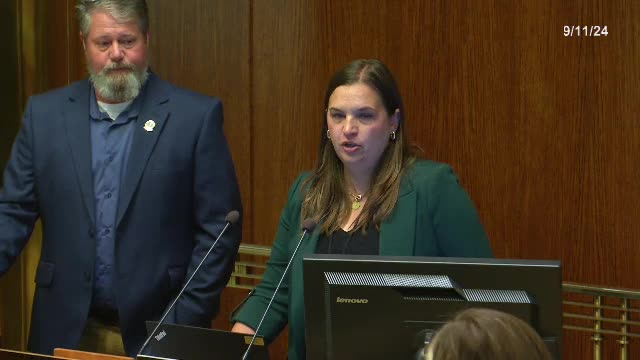Minnesota property tax myths debunked as changes loom
September 11, 2024 | St. Paul City, Ramsey County, Minnesota
This article was created by AI summarizing key points discussed. AI makes mistakes, so for full details and context, please refer to the video of the full meeting. Please report any errors so we can fix them. Report an error »

In a recent government meeting, officials addressed common misconceptions surrounding property taxes and outlined significant legislative changes impacting tax rates for 2025.
The discussion began with a clarification of several myths about property taxes. Officials emphasized that property taxes do not automatically increase each year; rather, they are influenced by local budgets, market values, and legislative changes. They also noted that while rising market values can lead to higher assessed values, this does not guarantee increased revenue for local governments, which set their revenue needs independently. Additionally, property taxes are not directly tied to the services received by taxpayers, nor are they based on the owner's income, despite some state programs offering tax refunds and deferrals for low-income residents.
Two key legislative changes were highlighted for 2025. First, the classification for low-income housing will shift from a two-tier to a single-tier system, reducing the tax rate for all qualifying low-income properties to 0.25%. This change is expected to decrease taxes for low-income housing, although the overall tax revenue required by local jurisdictions will remain unchanged. Second, the homestead market value exclusion will expand, allowing more properties to qualify for reduced taxable market values, thereby lowering property taxes for those homeowners.
The meeting also covered the fiscal disparities program, designed to promote equitable distribution of commercial and industrial property tax revenue among local jurisdictions. This program has seen a year-over-year increase in contributions, with St. Paul expected to receive approximately $40.5 million in 2025, marking a $2 million increase from the previous year.
Officials provided insights into the upcoming property tax estimates, noting that while residential market values and taxes are generally increasing, some areas, such as downtown St. Paul, are experiencing decreases. The meeting concluded with a reminder of important upcoming deadlines for tax levy certifications and public hearings, emphasizing the need for transparency and community engagement in the property tax process.
Overall, the discussions underscored the complexities of property taxation and the ongoing efforts to ensure fairness and clarity for residents in Ramsey County.
The discussion began with a clarification of several myths about property taxes. Officials emphasized that property taxes do not automatically increase each year; rather, they are influenced by local budgets, market values, and legislative changes. They also noted that while rising market values can lead to higher assessed values, this does not guarantee increased revenue for local governments, which set their revenue needs independently. Additionally, property taxes are not directly tied to the services received by taxpayers, nor are they based on the owner's income, despite some state programs offering tax refunds and deferrals for low-income residents.
Two key legislative changes were highlighted for 2025. First, the classification for low-income housing will shift from a two-tier to a single-tier system, reducing the tax rate for all qualifying low-income properties to 0.25%. This change is expected to decrease taxes for low-income housing, although the overall tax revenue required by local jurisdictions will remain unchanged. Second, the homestead market value exclusion will expand, allowing more properties to qualify for reduced taxable market values, thereby lowering property taxes for those homeowners.
The meeting also covered the fiscal disparities program, designed to promote equitable distribution of commercial and industrial property tax revenue among local jurisdictions. This program has seen a year-over-year increase in contributions, with St. Paul expected to receive approximately $40.5 million in 2025, marking a $2 million increase from the previous year.
Officials provided insights into the upcoming property tax estimates, noting that while residential market values and taxes are generally increasing, some areas, such as downtown St. Paul, are experiencing decreases. The meeting concluded with a reminder of important upcoming deadlines for tax levy certifications and public hearings, emphasizing the need for transparency and community engagement in the property tax process.
Overall, the discussions underscored the complexities of property taxation and the ongoing efforts to ensure fairness and clarity for residents in Ramsey County.
View full meeting
This article is based on a recent meeting—watch the full video and explore the complete transcript for deeper insights into the discussion.
View full meeting
